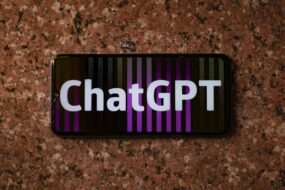
Using QuillBot Effectively
QuillBot can be a handy tool for writers looking to paraphrase and refine their text. However, it’s essential to understand how to use it efficiently to avoid issues related to plagiarism.
QuillBot’s Plagiarism Avoidance
QuillBot’s algorithms are crafted with the aim of evading detection by university plagiarism software, making it beneficial for students and writers. However, it’s important to note that improvements in plagiarism detection technologies, like Turnitin, can identify the unique structures and patterns often found in AI-generated content. While QuillBot modifies text, the resultant paraphrases may still exhibit recognizable patterns that tools like Turnitin flag.
| Detection Software | Able to Detect QuillBot? |
|---|---|
| Turnitin | Yes, it can identify QuillBot paraphrasing |
| Other Anti-Plagiarism Tools | Varies; generally less effective against QuillBot |
To minimize the chances of detection, make sure to thoroughly edit and humanize the generated text. This additional effort reduces the risk of QuillBot’s patterns being flagged.
Tips for Utilizing QuillBot
When using QuillBot, implement these strategies to enhance your text while reducing plagiarism risks:
- Paraphrase Thoroughly: After using QuillBot, read through the output to ensure that the essence of the text remains without direct wording from the original.
- Humanize the Output: Edit the QuillBot suggestions further. Adding your own insights or altering sentence structures will lower the chance of automated detection.
- Combine with Other Tools: Consider utilizing tools like Netus AI for additional paraphrasing options that may have a better chance of bypassing detection.
- Be Aware of Limitations: While QuillBot is advantageous, always double-check your work against plagiarism checkers if you are concerned about originality.
- Learn the Rules of Academic Integrity: Familiarize yourself with your institution’s policies regarding paraphrasing and the use of tools. For more information, refer to is it okay to use quillbot for school? and is quillbot academic misconduct?.
By combining QuillBot’s capabilities with thorough editing and an understanding of plagiarism avoidance, you can effectively enhance your writing without the fear of detection.
Understanding AI Detection
When using tools like QuillBot, it’s essential to understand how AI detection works to ensure your content avoids plagiarism. Here’s what you need to know about AI detection technologies and how to identify AI-generated text.
AI Detection Technologies
AI detection technologies have evolved significantly in recent years, enabling educators and institutions to identify content generated by artificial intelligence. One of the most recognized tools is Turnitin, which can distinguish between AI-generated and human-generated writing with an accuracy rate of 98% (LinkedIn). Turnitin’s technology measures various factors, including originality and coherence, which play a pivotal role in detection.
| Detection Tool | Accuracy Rate | False Positive Rate |
|---|---|---|
| Turnitin | 98% | <1% |
Turnitin operates with a confidence threshold of 98%. This means it aims to minimize false flags of human writing as AI-generated. However, there’s a slight chance (up to 15%) that some AI-generated text might not be flagged. This technology focuses on analyzing aspects like grammar, style, tone, and content characteristics to identify unnatural writing patterns (Netus AI).
Detecting AI-Generated Text
Identifying AI-generated text can be challenging, especially since tools like QuillBot are designed to generate content that is undetectable by traditional anti-plagiarism software. However, AI writing typically has certain characteristics that can help you identify it:
- Predictability: AI-generated text often shows higher predictability compared to human writing, which incorporates personal experiences and emotions.
- Grammar and Syntax: While AI can generate grammatically correct sentences, it may not always maintain the same level of complexity or nuance found in human writing.
- Lack of Depth and Personal Touch: AI cannot fully replicate the depth or personal touch often present in human-created content, lacking unique insights or anecdotal references.
Despite these challenges, it’s crucial to stay informed about how AI detection is advancing. Universities are increasingly adopting these technologies to uphold academic integrity, and understanding them can help you navigate the use of QuillBot without the risk of plagiarism. If you’re concerned about using QuillBot in an academic setting, you might find our article on is it okay to use quillbot for school? helpful. For further exploration on the implications of using AI in academia, consider reading about is quillbot academic misconduct? or is it legal to use chatgpt for paraphrasing?.
If you’re looking to refine your writing further, using a Ai Busted can help modify sentence structures and improve originality while ensuring readability and engagement.




